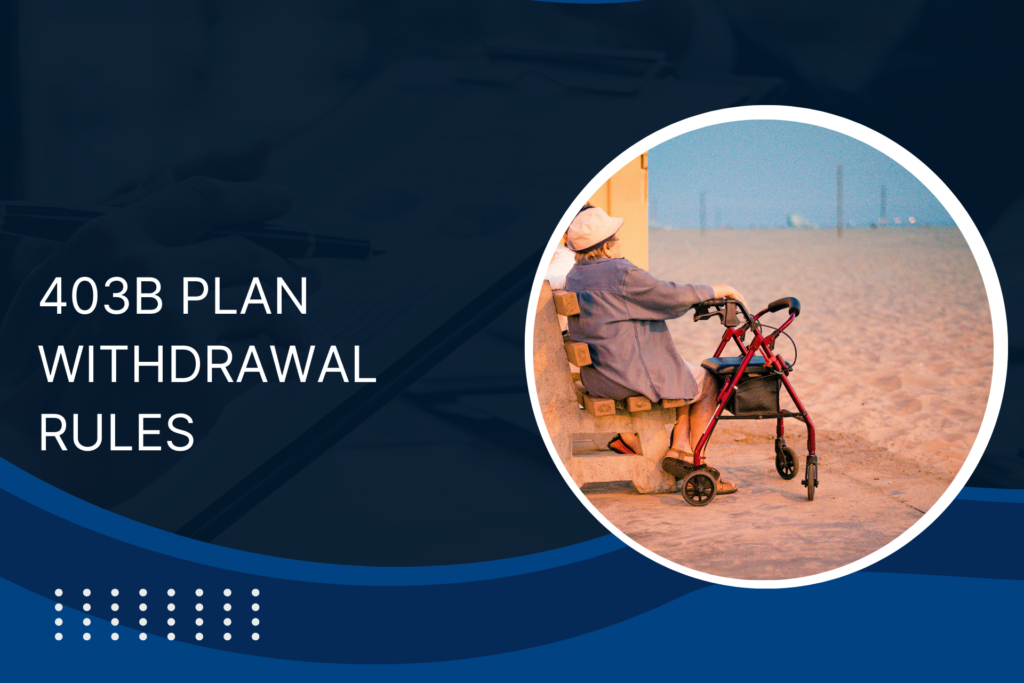Introduction: 403b plan withdrawal rules
Navigating the complex landscape of retirement plans can be daunting, especially when it comes to understanding the 403b plan withdrawal rules. A 403b plan is a retirement savings plan available to employees of public schools, certain non-profit organizations, and certain ministers. It is similar to a 401k plan but tailored for specific sectors. Knowing when and how you can withdraw your funds is crucial to avoid unnecessary penalties and maximize your retirement savings.
Eligibility for 403b plan withdrawal rules
403b plans have specific criteria for when participants can begin making withdrawals. Generally, you can start withdrawing funds without incurring a penalty under the following circumstances:
- Reaching Age 59½: At this age, you can start making withdrawals without the standard 10% early withdrawal penalty.
- Separation from Service: If you leave your job after turning 55, or at any age if you qualify for a qualified domestic relations order (QDRO).
- Disability: You can withdraw funds penalty-free if you become disabled.
- Financial Hardship: Withdrawals for immediate and heavy financial needs are allowed but subject to income tax and potential penalties if you’re under 59½.
- Required Minimum Distributions (RMDs): Once you reach 73, you must start taking RMDs annually from your 403b plan.
Types of 403b plan withdrawal
403b plan withdrawals can be categorized into several types:
- Lump-Sum Distribution: A one-time payment of the entire account balance.
- Periodic Payments: Regular withdrawals over a specified period.
- Annuity Payments: Payments made at regular intervals for the rest of your life or a specified number of years.
Tax Implications
Understanding the tax implications of 403b withdrawals is essential for effective retirement planning:
- Income Tax: Withdrawals from a traditional 403b are subject to ordinary income tax.
- Early Withdrawal Penalty: A 10% early withdrawal penalty applies if you withdraw funds before age 59½ unless an exception (such as separation from service after age 55) applies.
- Roth 403(b) Accounts: Qualified distributions from Roth 403(b) accounts are tax-free, provided the account has been held for at least five years and the account holder is over 59½ or meets other qualifying criteria.
Required Minimum Distributions (RMDs)
RMDs are mandatory withdrawals that must start by April 1 following the year you turn 73. The amount is calculated based on your life expectancy and the account balance at the end of the previous year. Failure to take RMDs results in a hefty penalty of 50% of the required distribution amount.
Hardship Withdrawals
Hardship withdrawals are permitted under certain circumstances where there is an immediate and heavy financial need. These withdrawals are limited to the amount necessary to satisfy the need and are subject to regular income tax and, if under 59½, a 10% penalty. Acceptable reasons for hardship withdrawals typically include:
- Medical expenses
- Purchase of a primary residence
- Tuition and related educational fees
- Preventing eviction or foreclosure
- Funeral expenses
- Certain repairs for damage to the employee’s principal residence
Want to Know More about 403b Plans?
Click here to Schedule a Free Consultation Today!Loan Provisions
Some 403b plans offer loan provisions, allowing you to borrow against your retirement savings. The key points to consider are:
- Loan Limits: You can borrow the lesser of $50,000 or 50% of your vested account balance.
- Repayment Terms: Loans must typically be repaid within five years, though longer terms may be available for home purchases.
- Interest Rates: The interest rate is generally set by the plan and is typically lower than the rates for other types of borrowing.
- Impact on Retirement Savings: While loans can provide needed liquidity, they reduce the amount available for retirement and may affect your account’s growth potential.
401k vs 403b plan withdrawal rules
While 403b and 401k plans share similarities, there are key differences in their withdrawal rules:
- Catch-Up Contributions: 403b plans offer an additional catch-up contribution option for employees with 15 years of service with the same employer.
- Investment Options: 403b plans often include annuities and mutual funds, whereas 401k plans offer a broader range of investment choices.
- Employer Contributions: Both plans may offer employer contributions, but the matching and vesting schedules can differ.
Strategies for Minimizing Taxes and Penalties
To maximize your retirement savings and minimize taxes and penalties, consider the following strategies:
- Plan Your Withdrawals: Time your withdrawals to stay within lower tax brackets.
- Utilize Roth Accounts: Contribute to Roth 403b accounts for tax-free withdrawals in retirement.
- Take Advantage of Catch-Up Contributions: If you’re over 50, make additional catch-up contributions.
- Consider a Rollover: Rolling over your 403b into an IRA can offer more flexibility and control over your investments.
Conclusion
Understanding the 403b plan withdrawal rules is essential for effective retirement planning. By familiarizing yourself with the various types of withdrawals, tax implications, and strategies for minimizing penalties, you can make informed decisions that enhance your financial security in retirement.


